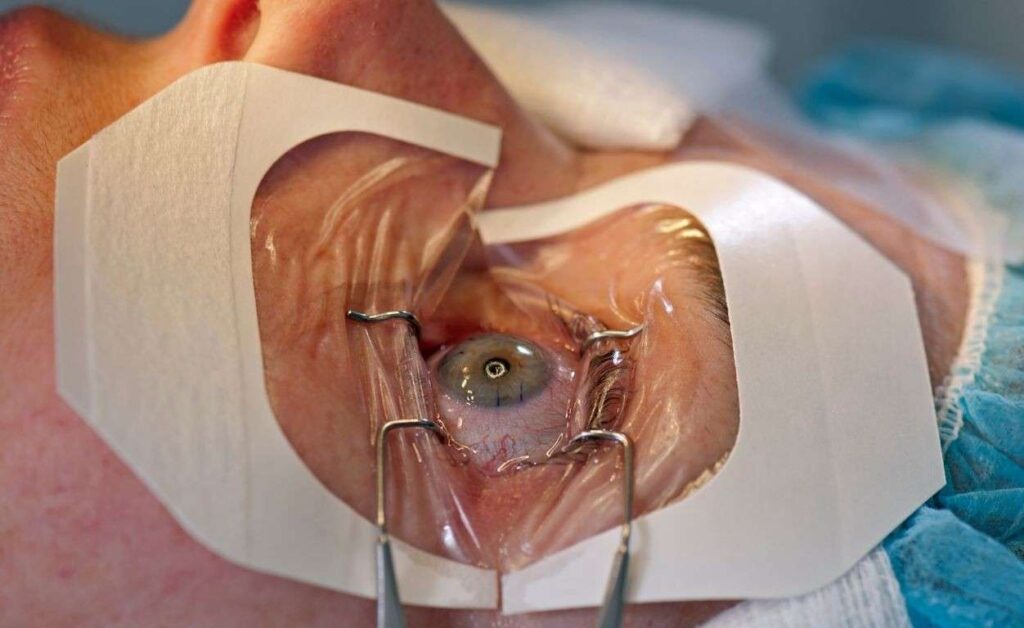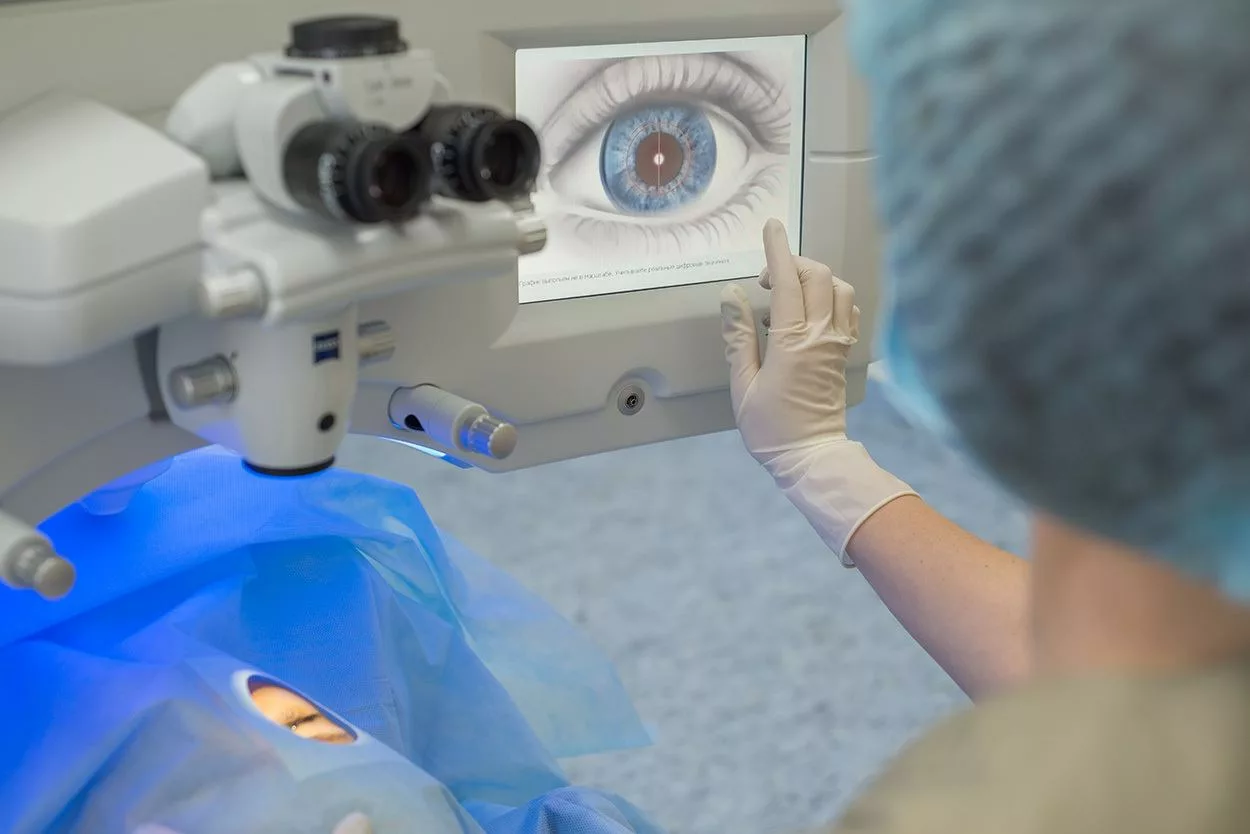LASIK (Laser-Assisted In Situ Keratomileusis) eye surgery has revolutionized the field of vision correction, providing patients with a viable option to free themselves from glasses and contact lenses. This article delves into the intricacies of LASIK surgery, shedding light on its scientific principles, benefits, comparisons with other vision correction strategies, potential risks, and criteria for candidacy. Through this comprehensive overview, readers will gain insight into why LASIK stands out as a preferred option for vision correction.
Understanding LASIK Eye Surgery
LASIK eye surgery is a surgical procedure that reshapes the cornea to improve visual acuity. By utilizing laser technology, LASIK addresses various refractive errors, such as myopia (nearsightedness), hyperopia (farsightedness), and astigmatism. The surgery is performed on an outpatient basis, making it a convenient and efficient option for those seeking clearer vision.

The Science Behind LASIK
The science of LASIK is grounded in the understanding of how light refracts through the cornea. When the cornea’s shape is irregular, light does not properly focus on the retina, leading to blurred vision. LASIK involves using a precision laser to alter the curvature of the cornea, allowing light rays to focus correctly. The two primary types of lasers used in LASIK are the excimer laser, which sculpts the cornea, and the femtosecond laser, which creates a thin flap in the cornea for treatment.
Current technology has enhanced the accuracy and safety of LASIK, incorporating wavefront-guided technology that takes into account the unique imperfections of an individual’s eye. By providing a customized approach, LASIK can improve not just basic visual acuity but also higher-order aberrations, making the vision clearer and more vibrant. This personalized treatment means that patients can experience a level of clarity and sharpness that was previously unattainable with glasses or contact lenses, significantly enhancing their quality of life.
The Procedure of LASIK Surgery
The procedure typically lasts around 15 minutes per eye, though the entire appointment may take longer due to preoperative preparations. Initially, numbing eye drops are administered to ensure comfort during the surgery. A suction ring is then placed on the eye to help stabilize it. Following stabilization, a thin flap of tissue is created on the cornea, which is gently lifted to access the underlying corneal tissue.
Using the excimer laser, the surgeon precisely reshapes the cornea according to the individual’s specific prescription. Once this laser treatment is complete, the corneal flap is repositioned, adhering back to the eye without the need for stitches. Patients typically experience immediate visual improvement, with follow-up visits scheduled to monitor healing. The recovery process can vary from person to person, but many find that they can resume normal activities within a day or two, enjoying the newfound freedom from glasses and contacts. Moreover, advancements in post-operative care, such as the use of anti-inflammatory and antibiotic eye drops, contribute to a smoother healing process and help minimize discomfort.
Benefits of LASIK Eye Surgery
LASIK eye surgery offers numerous benefits, making it a popular choice among individuals looking to correct their vision. These advantages extend beyond the convenience of not wearing glasses or contacts.
Long-Term Vision Improvement
One of the standout benefits of LASIK is the potential for long-lasting vision improvement. Many patients achieve 20/25 vision or better after the procedure, significantly enhancing their quality of life. Unlike temporary solutions, such as glasses or contact lenses, LASIK addresses the underlying refractive error, providing a more permanent solution. Learn more about refractive error, on https://ophthalmology.wustl.edu/guide-to-refractive-errors/
Furthermore, numerous studies indicate that the majority of patients maintain their improved vision for many years post-surgery, emphasizing the effectiveness and reliability of this procedure as a long-term vision correction option. This longevity can lead to substantial cost savings over time, as patients no longer need to invest in new prescriptions for glasses or contact lenses, which can accumulate to a significant amount over the years. Additionally, the freedom from corrective eyewear allows individuals to engage in activities they may have previously avoided, such as swimming or playing certain sports, without the worry of losing or damaging their glasses.
Quick Recovery Time
Another major advantage of LASIK is the rapid recovery time. Most patients are able to return to regular activities within a day or two after the surgery. The majority experience only mild discomfort, which can be managed with prescribed medication or over-the-counter pain relievers.
This quick turnaround from surgery to daily life makes LASIK an appealing option for busy individuals or those who wish to minimize downtime for personal or professional reasons. Many patients report being able to resume work or school shortly after the procedure, which is particularly beneficial for those with demanding schedules. The ability to see clearly without the hassle of glasses or contacts also enhances daily routines, from driving to reading, allowing for a more seamless and enjoyable lifestyle.

Minimal Pain and Discomfort
Contrary to many surgical procedures, LASIK is associated with little to no pain for the patient. The use of numbing drops during the procedure ensures a painless experience. Postoperatively, while some patients may experience mild irritation or dryness, these symptoms usually subside within a few days.
The low level of discomfort associated with LASIK contributes to its reputation as a safe and minimally invasive procedure, making it accessible to a broad range of candidates. Patients often express relief at how straightforward the process is, with many describing the experience as surprisingly quick and easy. Additionally, advancements in technology and techniques have further reduced the risks and discomfort associated with the procedure, allowing even those with higher prescriptions or astigmatism to benefit from LASIK. This accessibility has led to a growing number of individuals seeking out this life-changing surgery, transforming their vision and, by extension, their lives. To know more about prescriptions click here.
Comparing LASIK to Other Vision Correction Options
When considering vision correction, many patients evaluate LASIK against other alternatives. Understanding these comparisons can help individuals make informed decisions about their eye care options.
LASIK vs. Glasses and Contact Lenses
While glasses and contact lenses are traditional methods for vision correction, they often come with limitations. Glasses can be cumbersome and may restrict peripheral vision, while contact lenses require regular maintenance and can cause discomfort for some users.
In contrast, LASIK provides a permanent solution, eliminating the need for glasses or contacts altogether. Many patients appreciate the freedom to engage in activities without the worry of visual aids, further enhancing their lifestyle and activities. For instance, athletes often find LASIK particularly appealing, as it allows for unencumbered movement and a clearer field of vision during sports. Additionally, the convenience of waking up and seeing clearly without fumbling for glasses or inserting contacts is a significant advantage that many LASIK patients cherish.
LASIK vs. PRK (Photorefractive Keratectomy)
PRK is another laser vision correction procedure, similar to LASIK but differing in technique. While LASIK involves creating a corneal flap, PRK treats the corneal surface directly. This approach may be beneficial for patients with thinner corneas or those who participate in contact sports.
However, PRK often entails a longer recovery period compared to LASIK. Patients may experience more discomfort in the first few days post-procedure and may take longer to reach optimal vision. These differences are crucial considerations for those deciding between the two options. Moreover, PRK can be an excellent choice for individuals with specific lifestyle needs, such as those who work in environments where eye protection is necessary, as the absence of a corneal flap reduces the risk of flap-related complications. Understanding the nuances of recovery and lifestyle compatibility can help patients make a more tailored choice.
LASIK vs. ICL (Implantable Collamer Lens)
ICL is a surgical alternative where a lens is implanted within the eye, suitable for those with high refractive errors or those not eligible for LASIK. While ICL provides correction similar to LASIK, it requires a more invasive procedure, including the placement of a lens inside the eye.
Additionally, ICL may involve a longer recovery time and a higher cost compared to LASIK. Patients must consult with their eye care professional to discuss which option aligns best with their visual needs and lifestyle preferences. It’s also worth noting that ICL can be reversed, offering a flexibility that LASIK does not provide. This aspect can be particularly appealing for younger patients whose vision may continue to change over time. Furthermore, advancements in ICL technology have led to improved outcomes and reduced risks, making it a viable option for many individuals seeking long-term vision correction solutions.
Potential Risks and Complications of LASIK
While LASIK is generally considered a safe procedure, it is essential to acknowledge the potential risks and complications that can arise. Being informed can aid patients in making prudent decisions about their eye health.
Short-Term Side Effects
Postoperatively, some patients may experience short-term side effects such as blurred vision, light sensitivity, and dry eyes. These symptoms usually resolve within a few days to weeks as the eyes heal. It is recommended that patients follow their surgeon’s post-operative care instructions to minimize discomfort and enhance recovery.
Long-Term Risks
While LASIK has a strong overall safety record, some long-term risks include chronic dry eyes, glare, halos, or vision fluctuations. In rare cases, patients may require a follow-up procedure to achieve their desired vision. Understanding these risks allows patients to weigh the potential benefits against the likelihood of complications and prepare for any necessary adjustments.
Determining If You’re a Good Candidate for LASIK
Deciding to undergo LASIK surgery is a significant choice that involves determining candidacy based on various factors. Consulting with an eye care professional is essential to ensure suitability for the procedure.
Age and Health Considerations
Generally, LASIK candidates should be at least 18 years old, as vision continues to evolve during adolescence. Additionally, candidates should be in good overall health and free from certain medical conditions, such as autoimmune diseases, which may affect healing.
Many practitioners require a stable prescription for at least one year prior to surgery, ensuring that the eyes are ready for the corrective procedure.
Vision Stability
Vision stability plays a crucial role in candidacy. Individuals whose prescriptions have changed frequently may not be suitable candidates until stability is achieved. A thorough eye examination can help determine the stability of vision and overall suitability for LASIK.
Corneal Thickness and Shape
Finally, the thickness and shape of the cornea are essential considerations. Patients with corneas that are too thin may be at higher risk for complications and may need to explore alternative options. A comprehensive evaluation by a qualified eye care professional will assess these factors to determine the best course of action.
In conclusion, LASIK eye surgery has emerged as a leading option for vision correction due to its advanced technology, numerous benefits, and overall safety. Understanding its implications can empower individuals to make informed choices, resulting in clearer vision and improved quality of life.
Other resources: Does LASIK Eye Surgery Hurt What You Need to Know

Leave a Reply